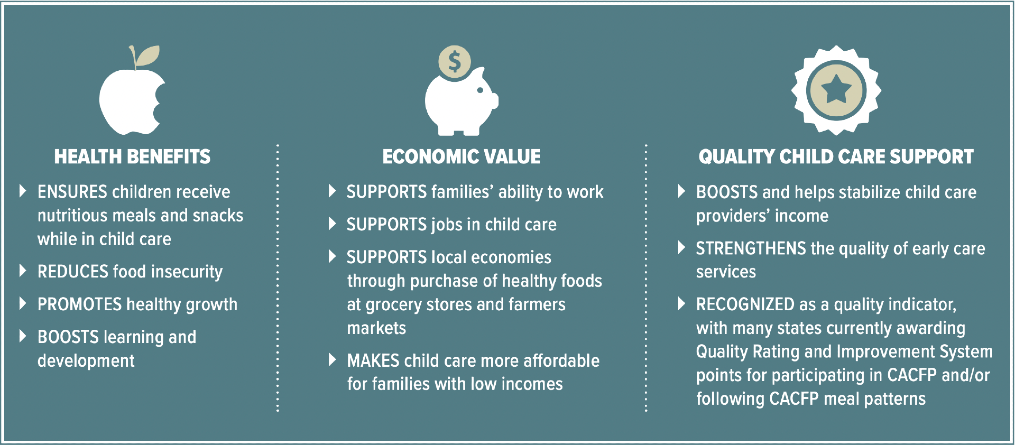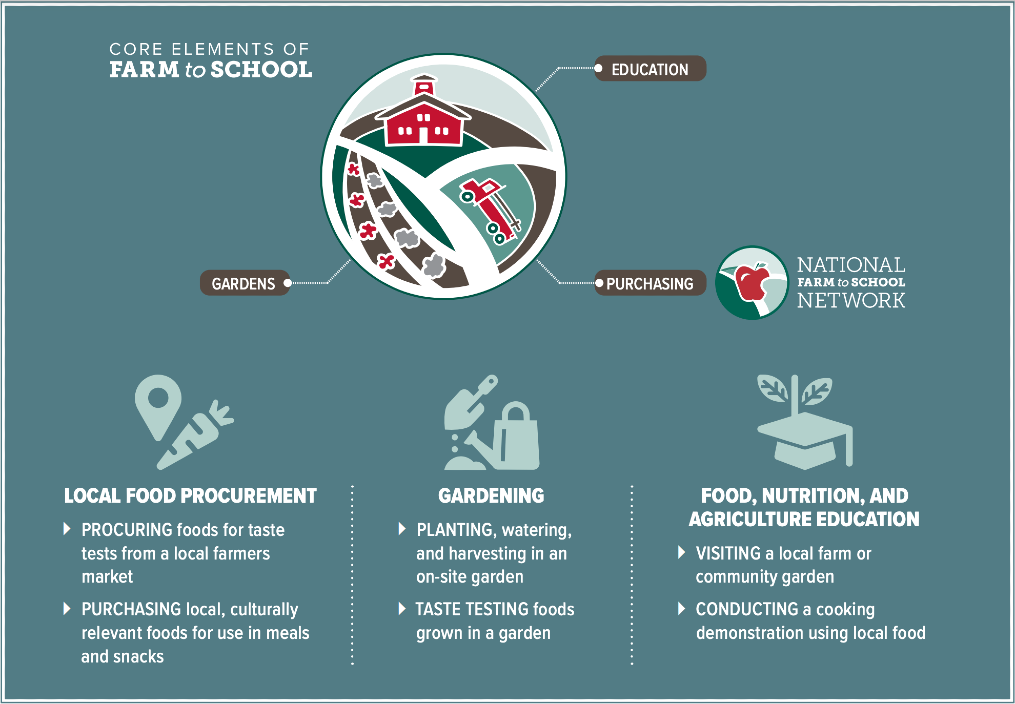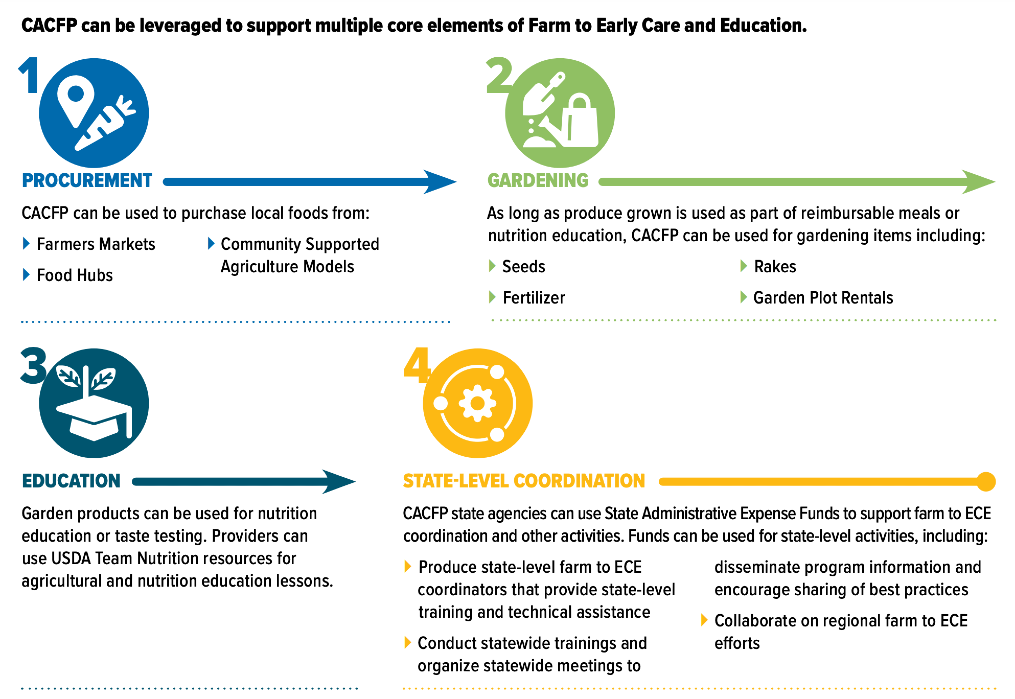When combined, the Child and Adult Care Food Program (CACFP) and Farm to Early Care Education (Farm to ECE) activities can have an extraordinary impact on children, child care providers, and local communities. Leveraging CACFP for Farm to Early Care and Education: Growing Wins Across Early Childhood and Food System Sectors aims to support child care providers to access CACFP and utilize it for eligible Farm to ECE actitives by highlighting the mutually beneficial synergy between these initiatives. The report also provides recommendations for stakeholders to boost participation in these vital programs. Increased access to and use of CACFP and Farm to ECE activities is a pivotal cross-sector approach to improving children’s equitable access to fresh, nutritious foods to reduce hunger.
How CACFP, Farm to ECE Combine for Maximum Impact
Research shows that it can often be prohibitively expensive for child care providers to provide local foods for use in meals served to the children in their care. The Child and Adult Care Food Program, as a mandatory federal funding mechanism, helps to defray these costs, paying for nutritious meals and snacks for eligible children who are enrolled at participating child care centers, family child care homes, afterschool programs, and emergency shelters.

CACFP boosts the potential of Farm to ECE activities, which seek to enhance nutrition by expanding access to local food sources, hands-on gardening activities, and food and agricultural education, while encouraging the buying of locally farmed food.

Likewise, Farm to ECE activities can support the impact of CACFP by increasing the actual intake of healthy foods served to children in child care settings, and uplifting local communities by supporting local and regional farmers, ranchers, dairies, food processors and distributors.
How CACFP Can Be Used for Farm to ECE Activities
CACFP can support all three core elements of Farm to ECE activities by providing resources and defraying the monetary costs associated with local food procurement; garden development and maintenance; and food, nutrition, and agriculture education. CACFP state administrative expense (SAE) funds can also be used to support systems changes that strengthen and expand Farm to ECE.

About The Report
Despite the positive and compounding impacts of pairing CACFP with Farm to ECE activities, a variety of barriers prevent all too many child care sites from using each of these strategies. But changes to processes, policies, regulations, and available resources can help alleviate these barriers.
To explore and promote these possibilities, FRAC conducted interviews with key national, state, and local CACFP and Farm to ECE partners, and performed a literature review of existing materials. Quantitative and qualitative analysis identified:
- key barriers,
- recommended actions,
- best practices, and
- sample tools for accessing and leveraging CACFP for Farm to ECE activities.
Acknowledgments
The Food Research & Action Center (FRAC) gratefully acknowledges the major dedicated support of the Farm to Early Care and Education work provided by the W.K. Kellogg Foundation.
